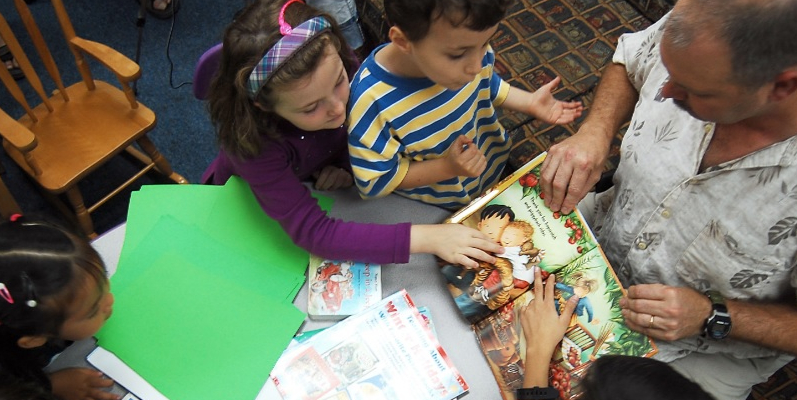A few weeks ago, I wrote a two-part blog series about why I think it’s so hard to help students learn to summarize. On our state assessment, students from third to eighth grade are required to identify the “best” summary in a multiple choice question format.
The data show that kids in our district (and in the entire state) don’t typically do well on the summary questions. As a proficient reader, I struggle with how to help kids.
What I do know is that I don’t want to be guilty of only teaching students a test strategy for identifying the correct summary choice.
When coaching teachers, I want to make sure that we focus on giving students tools for real-life tasks. Will kids ever be asked to choose “the best” summary in any other real-life scenario? I know I never have been faced with that challenge throughout my life as an adult reader.
So, what authentic task will our kids face as readers that we can use to prepare them for identifying a quality summary?
What if we shift our focus from delivering instruction for correctly answering a multiple choice question to teaching kids how to write quality summaries? Wouldn’t that be an authentic reader/writer task?
I shared a little about that here, but last week a new batch of third grade students tried their hand at writing summaries. One of the greatest challenges for our students is just knowing how to get started. That’s why specific criteria is needed when guiding students to write their own summaries.
The class understood how to use a plot map to capture their thinking about fiction text so we knew that would be helpful criteria for creating a summary. Earlier this year we’d already read Big Al by Andrew Clements so it was the perfect story to revisit and use as the text for me as I modeled how to write a summary.
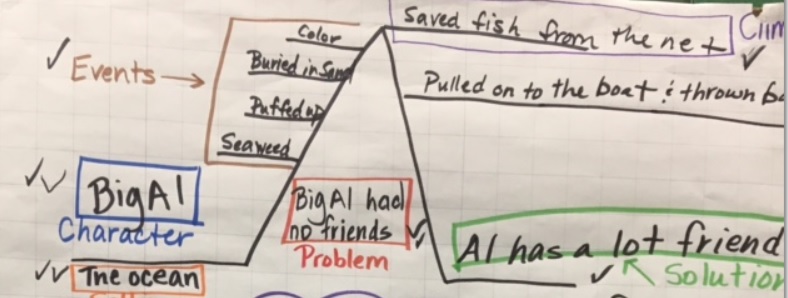
I shared with students that summaries come in variety of lengths, but it’s important to remember that summaries should be precise and concise. My goal during that model lesson, I told them, was to write a correct summary of the story in no more than three sentences.
The first step I shared was to combine the character, setting and problem in one sentence. The second sentence included a synthesis of the events, and the climax and resolution made up the final sentence. I wrote all this in front of the students in a few short minutes while talking aloud about my thinking while I was writing.
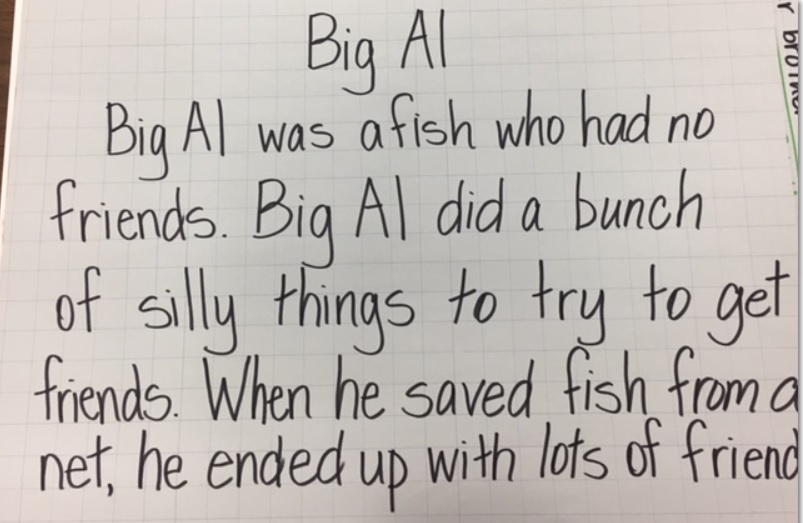
Next I showed students how to go back and identify each part in the summary from our criteria (the plot structure) and indicate that in the corresponding color from the plot diagram. This process helps students to see clearly how to use the simple plot structure as a framework for creating summaries.
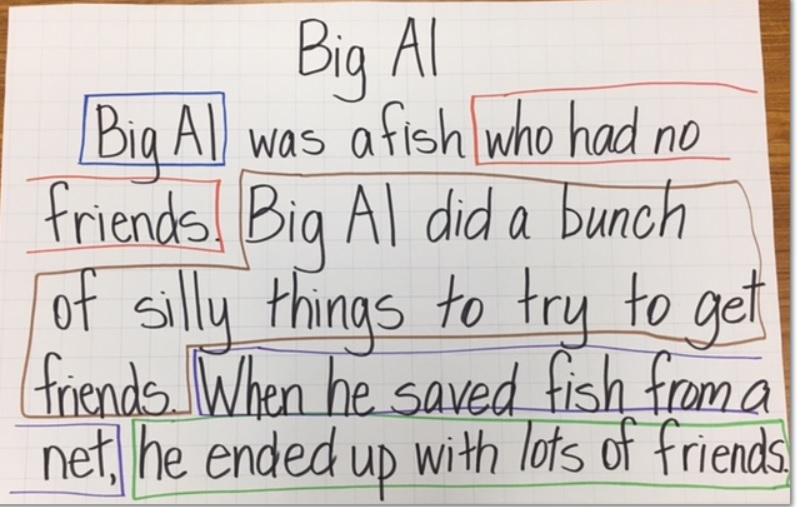
I wanted students to have one more go at creating a summary, so the class and I worked together using another text I’d read aloud a few weeks earlier. At this point, students worked in pairs to put together information from the plot structure to create sentences for the summary of Wolfie the Bunny by Amy Dyckman. Student pairs offered up their suggestions for sentences and as a group we completed a short summary of the book. We color-coded the summary to check that we’d included all the parts.
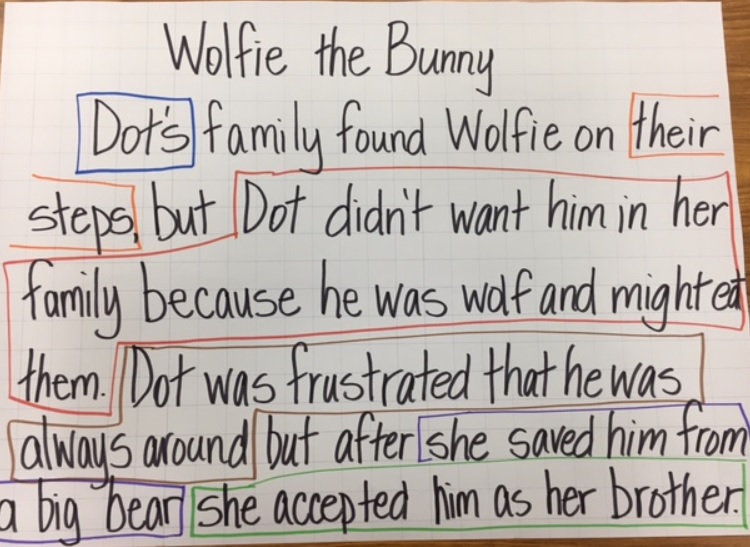
Then students were sent off to read the wordless picture book, The Farmer and the Clown by Marla Frazee. They were to create a plot structure and use the information to write their own precise, concise summary. The teacher and I knew that some students would need additional support so we provided a completed plot structure of the text for those who needed it. This was a help to our ELL students and others who needed scaffolds to complete the writing task.
The teacher and I were surprised by the differences we observed in the summaries that the class created as they worked individually. Several students decided to challenge themselves to combine all the information from the plot structure into two sentences.
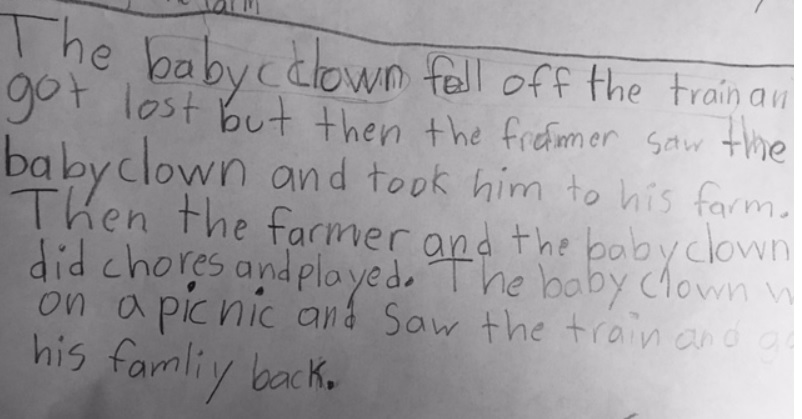
This week we’ll follow up by showing hand written copies of the students’ summaries on flip chart paper. We’ll post those on the wall, label them A, B, C, D (simulating the multiple choice questions they’ll see on the state assessment) and together we’ll evaluate the quality of the work by color-coding and discussing the choices writers made in creating their summaries.
Once kids have written, evaluated and discussed they’ll have a chance as a class to choose the “best” summary. This process will hopefully give our students the confidence they’ll need to work on their own in evaluating and comparing summaries.
And they’ll be much more likely to have the skills they need to choose the BEST summary all on their own.








